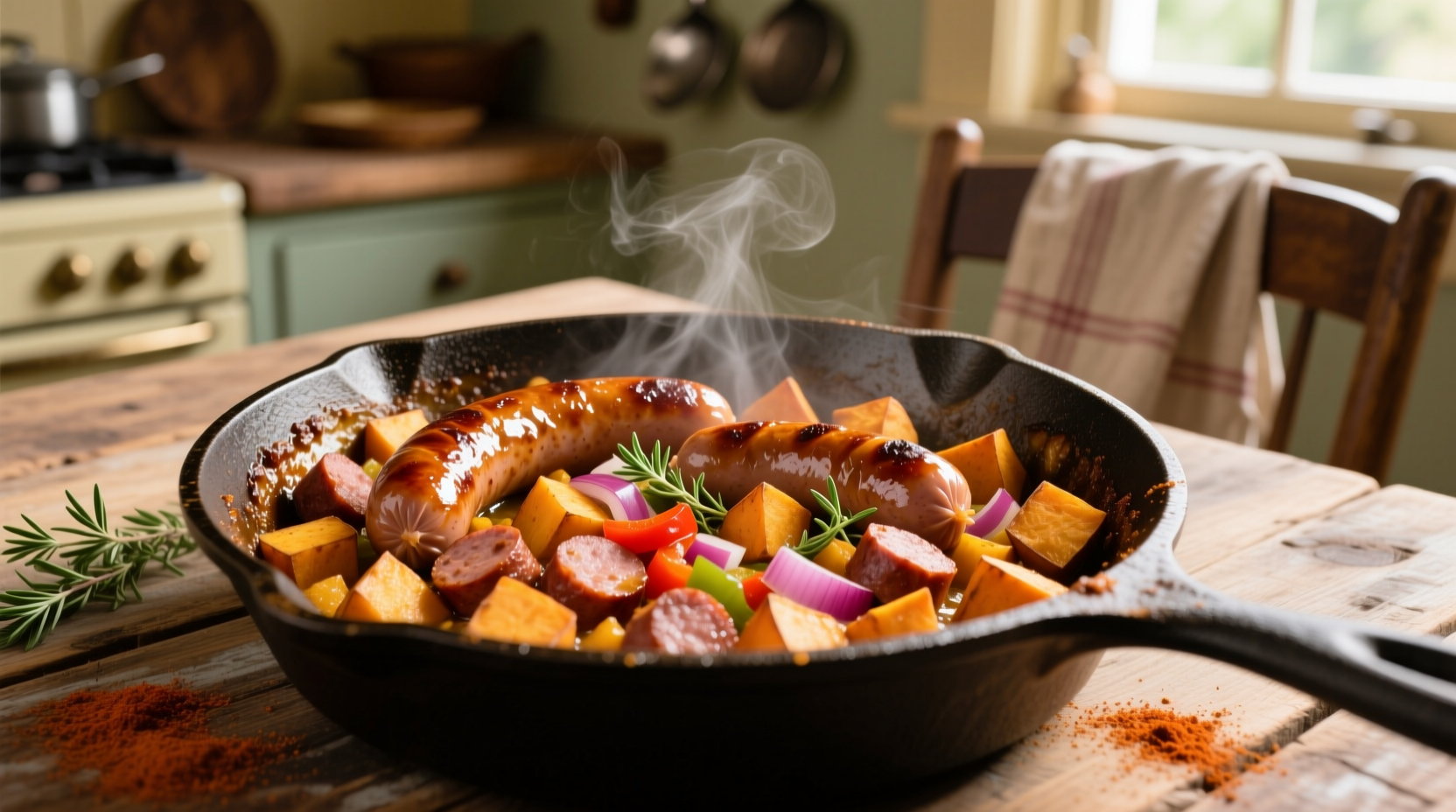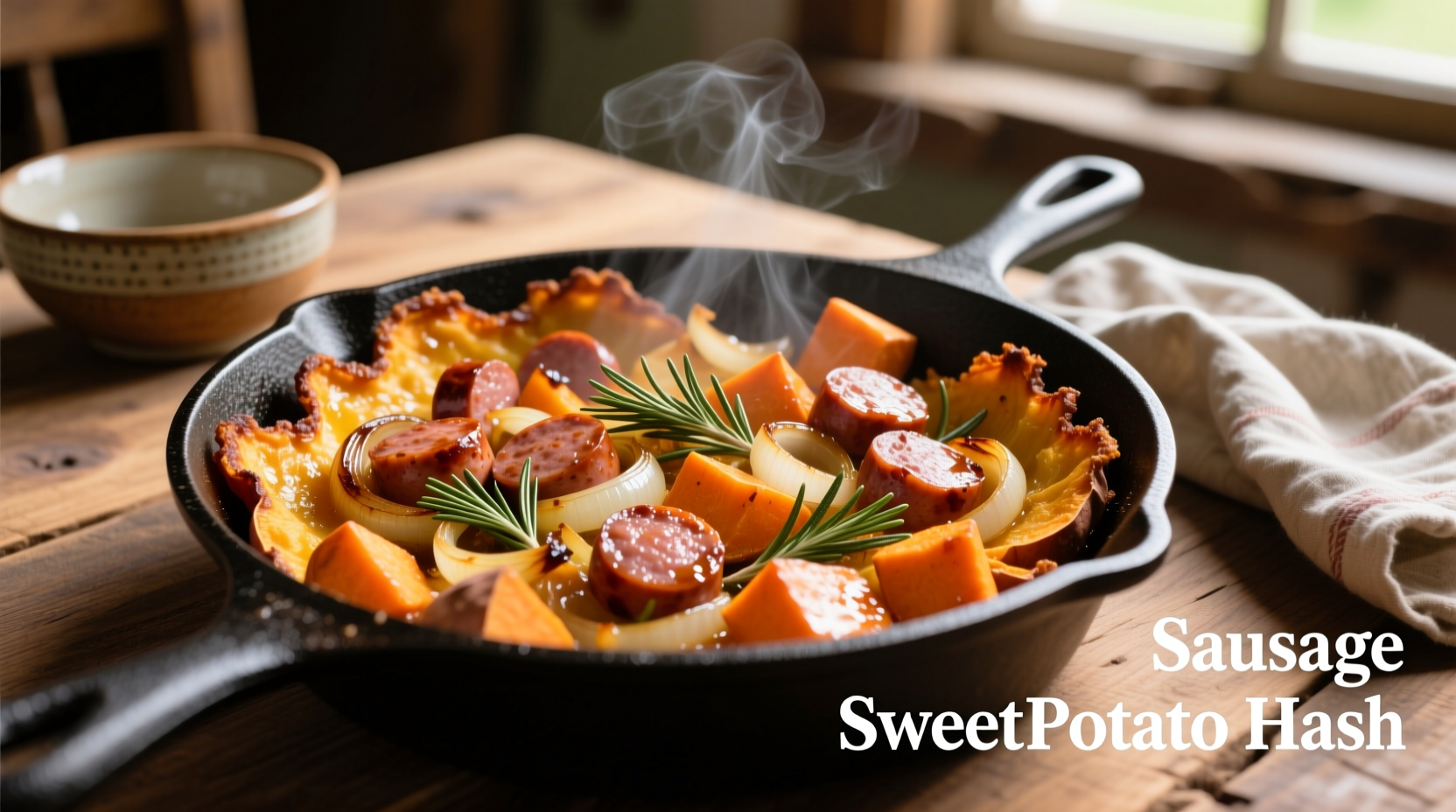Why Sausage Sweet Potato Hash Deserves a Spot in Your Recipe Rotation
More than just a trendy brunch item, sausage sweet potato hash combines culinary tradition with modern nutrition science. This dish delivers a balanced meal with protein from quality sausage, complex carbohydrates from sweet potatoes, and healthy fats that enhance nutrient absorption. Unlike traditional potato hash, sweet potatoes provide higher fiber content and essential vitamins while maintaining that satisfying crispy texture professional chefs prize.
Essential Ingredients and Smart Substitutions
The magic of great hash happens through ingredient quality and proper preparation. For authentic flavor development, choose these components carefully:
- Sweet potatoes: Select firm, deep-orange varieties like Garnet or Jewel for maximum sweetness and beta-carotene content
- Sausage: Opt for fresh, uncured pork or turkey sausage with minimal fillers (aim for 70-80% meat content)
- Aromatics: Yellow onions and garlic form the flavor foundation, while fresh thyme adds complexity
- Fat source: Use avocado oil for high-heat cooking (smoke point 520°F/270°C) or duck fat for richer flavor
| Nutrient | Traditional Potato Hash (1 serving) | Sweet Potato Hash (1 serving) |
|---|---|---|
| Calories | 380 | 340 |
| Dietary Fiber | 2g | 5g |
| Vitamin A | 0% DV | 438% DV |
| Glycemic Index | 85 | 44 |
Nutritional comparison based on USDA FoodData Central measurements for standard 6-ounce servings. Sweet potatoes provide significantly higher nutrient density while maintaining lower glycemic impact.
Professional Technique: Building Flavor Layers
Master chefs approach hash in distinct phases to maximize texture and flavor development. Follow this sequence for optimal results:
Prep Phase: The Foundation of Success
Cut sweet potatoes into uniform 1/2-inch cubes—this size ensures even cooking without becoming mushy. Soak in cold water for 15 minutes to remove excess starch, then thoroughly dry. Proper drying prevents steaming and promotes crispiness. For sausage, remove casings and break into small, consistent crumbles using a fork while cooking.
Cooking Sequence: Temperature Control is Key
- Render sausage: Cook over medium heat (325°F/163°C) until browned but not crispy—reserve 2 tablespoons of fat
- Sweat aromatics: Cook onions until translucent (5-7 minutes), adding garlic during the last 2 minutes
- Cook sweet potatoes: Add to the pan in a single layer, maintaining space between pieces for proper browning
- Low-and-slow approach: Cover and cook 12-15 minutes until tender, then uncover and increase heat to crisp
- Final sear: Cook uncovered 5-7 minutes, stirring only twice to develop crust
According to FDA food safety guidelines, sausage must reach an internal temperature of 160°F (71°C) to ensure pathogens are eliminated. Use an instant-read thermometer to verify doneness without overcooking.

Avoid These Common Hash Mistakes
Even experienced home cooks stumble with these hash pitfalls:
- Overcrowding the pan: Causes steaming instead of browning—cook in batches if necessary
- Stirring too frequently: Prevents proper crust formation—let sit 3-4 minutes between stirrings
- Adding wet ingredients: Fresh herbs or acidic components should go in during the last 2 minutes
- Incorrect potato size: Too small = mushy; too large = uneven cooking
Variations for Every Palate and Dietary Need
This versatile dish adapts beautifully to different preferences while maintaining its essential character:
- Vegetarian option: Substitute sausage with crumbled tempeh and smoked paprika
- Spicy kick: Add diced jalapeños with the onions and finish with chipotle powder
- Gourmet touch: Top with poached eggs and a drizzle of truffle oil
- Meal prep friendly: Double the batch and refrigerate for up to 4 days
Serving Wisdom: When Hash Shines Brightest
Sausage sweet potato hash performs exceptionally well in specific contexts while having limitations in others:
- Ideal for: Weekend brunches, post-workout meals, holiday breakfasts, and as a base for eggs
- Less suitable: Formal dinner parties or as a standalone dinner (pair with protein for evening meals)
- Perfect timing: Best served immediately after cooking when texture is optimal
- Storage note: Reheats well in cast iron but loses crispness when microwaved
Historically, hash evolved from resourceful New England cooks in the 1800s who transformed leftovers into satisfying meals. The sweet potato variation gained popularity during the farm-to-table movement of the 2010s as chefs sought healthier alternatives to traditional recipes.
Mastering Reheating for Perfect Leftovers
Revive leftovers like a professional kitchen with these methods:
- Cast iron method: Reheat in oven-safe skillet at 400°F (204°C) for 8-10 minutes
- Air fryer option: 375°F (190°C) for 5-7 minutes for maximum crispness
- Avoid: Microwave reheating which creates uneven texture and sogginess
- Pro tip: Add a splash of broth or water before reheating to restore moisture balance











 浙公网安备
33010002000092号
浙公网安备
33010002000092号 浙B2-20120091-4
浙B2-20120091-4